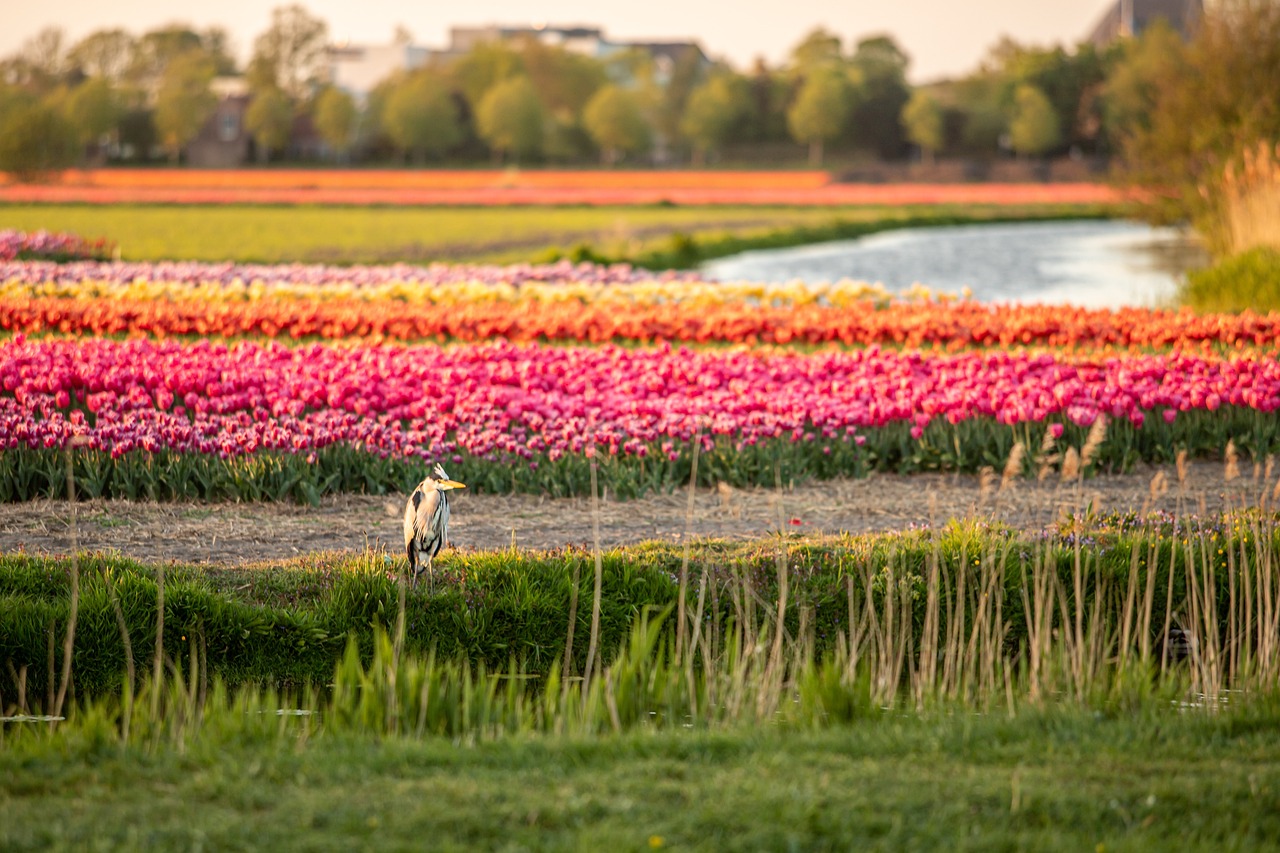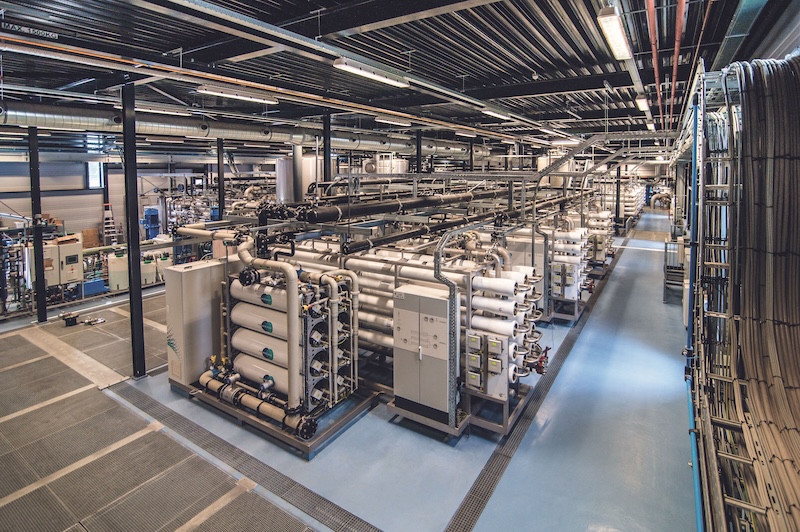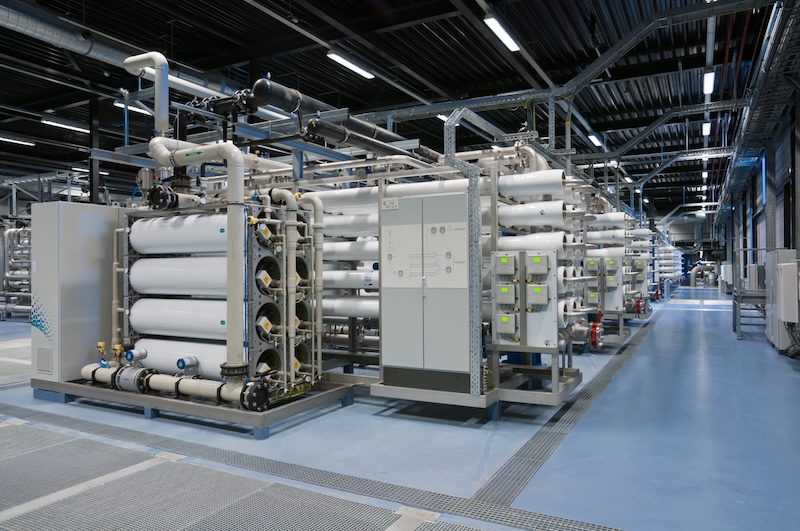
Dutch water company NieuWater is processing up to 125,000 m3/day of wastewater effluent to provide ultrapure water for use in industrial processes and to address water scarcity and reuse issues in the Netherlands.
With the UN estimating that by 2050, five billion people could face water shortages due to climate change, growing populations, increasing demand, and both decreasing availability and quality, the need for solutions is growing. Water reuse could play a huge role in tackling future water shortages.
The World Bank estimates that water scarcity could cost some regions up to six per cent of their Gross Domestic Product (GDP) by 2050 due to water-related impacts on agriculture, health, and incomes. It warns that this could potentially spur migration and even conflict.

Water reuse has the potential to prevent freshwater supplies from being depleted for a wide variety of purposes, from irrigation to industrial applications, from domestic appliances (think toilet flushing and washing machines) to even human drinking water.
Many industries and companies are looking at water reuse as a means of becoming more sustainable and self-sufficient. For example, the Cedrob meat processing and poultry production facility in Poland engaged Nijhuis Saur to design and build a wastewater treatment plant to take water from its many different processing operations.
Once fully operational, the company claims it will be one of the largest industrial water reuse solutions in the world, with the capacity to process 2,114,000 gallons of wastewater every day. Previously, this would have been discharged into nearby rivers untreated, but now it will be recycled into drinking water and reused in the meat processing facility.
Increasing the global water reuse capacity will cost money, which provides an interesting opportunity for those looking to invest in water treatment
In Qatar, a cultural village complex which features museums, an opera house, a cinema, a conference hall, an open-air amphitheatre, a beach, and more, is treating sewage effluent in collaboration with Veolia. It’s plant recovers between 5,000 and 15,000 m3/day for reuse in irrigation and cooling towers. Previously, this would have come from freshwater or from desalination plants in a region that often suffers from water scarcity.
These are just two of the increasing number of water reuse projects being initiated around the world that will help conserve freshwater sources and provide a measure of water security.
Increasing the global water reuse capacity will cost money, which presents interesting opportunities for investors in water treatment: There’s enormous potential to expand the markets for treated water.
Thanks to advanced filtration processes, treated water from a plant such as NieuWater’s Ultra Puur Water Factory in Emmen, Netherlands, is, in many ways, better than water sourced from the environment.
NieuWater treats water at its Ultra Puur Water Factory in Emmen, located alongside the wastewater treatment plant (WWTP).
Emmen sits in the southeastern Drenthe region of the Netherlands, where surface and groundwater availability become significantly limited during summer months. This regional scarcity led to the decision to utilise effluent from the Emmen WWTP as the primary source for ultra-pure water production.
It began operating to provide the NAM oil company with the ultra-pure water needed for steam production in its facilities. Its purified water has potential for many other uses, including domestic, and even for reintroduction into the drinking water system.
The Emmen WWTP facility processes between 15,000 and 125,000 m3/day, depending on rainfall, effectively treating waste equivalent to that produced by 200,000 people. From this, NieuWater produces and delivers up to 8,200 cubic meters of ultra-pure water daily to NAM's operations in Schoonebeek.

Environmental considerations were paramount in developing the purification process, which minimises chemical usage while simultaneously reducing waste streams to an absolute minimum.
This sustainable approach to industrial water production represents an innovative solution to water scarcity challenges while promoting responsible resource management.
Once it enters the factory, the water flows through five filtration lines, with very low chemical usage.

The process starts with water entering the factory from Emmen WWTP. The next step in the chain is ultrafiltration:
The ultrafiltration (UF) system removes even the smallest undissolved compounds from the effluent.
A pump pulls the effluent through membrane screens, which feature holes with a diameter of 0.04 micrometres, causing undissolved compounds and bacteria to stick to the outside.
To prevent a cake from forming, air is blown into the water from below, causing the screens to move. This is complemented by pump reversal every 10 minutes, which forces clean water through the screens from the inside, helping to further remove dirt from the outside to help increase membrane performance efficiency.
Biofouling on RO membranes has long been a problem in wastewater treatment. It is typically treated with harsh chemicals. However, NieuWater developed its solution to this problem – BODAC – a biological active filter that sits between the ultrafiltration and RO steps.
It works by using a BODAC filter with a large surface area that bacteria attach to before oxygen is added, which speeds up bacterial growth, which in turn uses up all the nutrients in the water, effectively stopping any further growth/biofouling.
The BODAC filters do not need replacing, which improves overall operational efficiencies, extends RO membrane lifespan, and lowers total cost of ownership.
During the first RO stage in the process, 98 per cent of all dissolved salts are removed. The RO process uses pressure tubes that are six meters long; the coiled membranes have a combined surface area of 40,000 m2, or approximately eight football pitches.
The previous BODAC stage removes all nutrients and prevents biofouling and the need for chemical treatment.
Concentrate from this stage is returned to the WWTP, with the clean water moving forward to the last purification stage.
The final purification stage involves further RO linked to an electro-deionisation system (EDI). The last remnants of dissolved ions are removed using an electrical potential difference, allowing only charged ions to pass through. All remaining salts are disposed of via side channels.
After this final step, the water has a purity of approximately < 0.065 µs/cm.
For many years, NieuWater was 100 per cent shareholder-owned, which limited its ability to take its technology into the wider market. With plans to explore licensing and undertake more R&D to develop and test new technologies, there was also a need to explore new methods of financing such plans.
Essentially, public financing was a roadblock to NieuWater’s plans. A solution was found with private finance from Rabobank, which allowed the company to operate more like a standalone enterprise for future projects.
The NieuWater Ultra Puur Water Factory provides a good example of a successful, low-risk investment for a historically risk-averse banking sector. It also demonstrates the potential for private finance to expand water reuse.
This article is taken from Liquid Assets: Navigating the risks and rewards of flexible financing solutions, a whitepaper co-produced by Aquatech Global Events and Rabobank. To download the full version, please visit here.